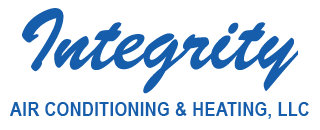
Once the weather starts to cool off, you may be thinking about how you’ll prepare your heating and cooling. After all, HVAC expenses can make up a significant piece of your monthly electric bill. To figure out new ways to lower their HVAC bill, some homeowners look closely at their thermostat. Is there a setting they should use to improve efficiency?
Most thermostats come with a ‘Fan’ or ‘Fan On’ setting. But if the fan is going during a typical cycle, what will the fan setting provide for an HVAC system? This guide can help. We’ll share what exactly the fan setting is and when you can use it to cut costs in the summer or winter.
My Thermostat Has a Fan Setting?
For most thermostats, the fan setting means that the air handler’s blower fan keeps running. A few furnaces will run at a low level in this setting, but in general heating or cooling isn’t being made. The ‘Auto’ setting, on the other hand, will turn on the fan over a heating or cooling cycle and turn it off once the cycle is finished.
There are advantages and disadvantages to using the fan setting on your thermostat, and the ideal option {will|can|should]] depend on your unique comfort preferences.
Advantages to utilizing the Fan/On setting:
- You can keep the temperature in every room more consistent by enabling the fan to keep running.
- Indoor air quality can increase since steady airflow will keep forcing airborne particles into the air filter.
- Fewer start-stop cycles for the blower fan helps lengthen its life span. Since the air handler is usually part of the furnace, this means you could avoid needing furnace repair.
Downsides to switching to the Fan/On setting:
- A nonstop fan could increase your energy costs by a small margin.
- Nonstop airflow may clog your air filter soon, increasing the frequency you’ll need to replace it.
{Choosing Between|Should My Thermostat Be on|Which Setting for My Thermostat? Fan or Auto in Summer/Winter
In the summer, warm air will sometimes stick around in unfinished spaces such as the attic or an attached garage. If you use the fan setting, your HVAC system might gradually move this warm air into the rest of your home, pushing the HVAC system to work harder to maintain the preferred temperature. In serious heat, this may result in needing AC repair more regularly as wear and tear grows.
The opposite can occur over the winter. Cooler spaces like a basement will hold onto cooler air, which can eventually drift into the rest of your home. Leaving the fan setting on will sometimes pull more cold air upward, increasing the amount of heating you need to keep warm.
If you’re still trying to figure out if you should try the fan/on setting, keep in mind that every home and family’s comfort needs are not the same. Leaving the HVAC system’s fan on might be best for you if:
Someone in your household has allergies. Allergies and other respiratory conditions can be hard on the family. Leaving the fan on should help to enhance indoor air quality, helping your family breathe easier.
Your home has hot and cold spots. Lots of homes wrestle with stubborn hot and cold spots that quickly shift to a temperature different from the rest of the house. The fan setting can help limit these changes by constantly refreshing each room’s airflow.


